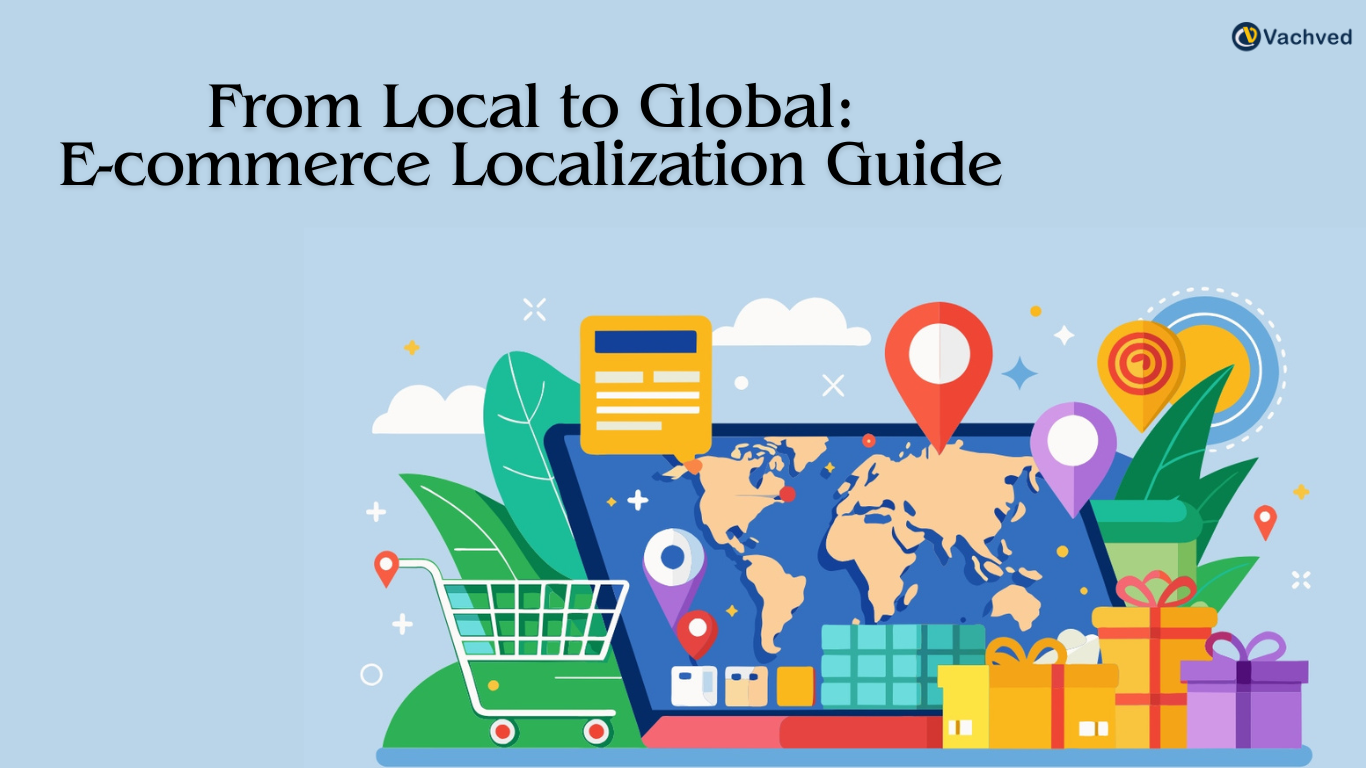From Local to Global: E-commerce Localization Guide
Introduction
Have you ever imagined that orders from all around the world are flooding your online store? Imagine receiving notifications in many languages, this is where localization comes in; it’s like giving your e-commerce site a professional makeover, removing any outdated features and unclear labeling to make it feel more welcoming to customers from all over the world.
Just like a good home renovation focuses on specific regions, let’s look at the main aspects of your online business that require localization in order to maximize your worldwide reach.
1. The Foundation- Language
Think about the last time you tried assembling furniture with instructions in a language you didn’t understand. Frustrating, right? That’s exactly what happens when non-native speakers visit your website and everything’s in English. Suddenly, navigating product categories, understanding descriptions, and completing the checkout process becomes a challenge. As English accounts for only about 25% of internet users, highlighting the need for multilingual websites to cater to the remaining 75%.
Establishing the Base- Consider the most recent instance in which you attempted to assemble furniture following directions written in a foreign language. Isn’t that frustrating? Upon seeing your website, which is entirely in English, it is just what occurs to non-native speakers. Suddenly, it’s a challenge to navigate product categories, understand descriptions, and finish the checkout procedure.
Expert translation is the initial stage of every localization effort. This includes having your menus, checkout procedures, and product descriptions all translated into the languages you want to target. A professional tip is as follows: Don’t opt for translations that are generic! A language may have regional differences. In British English, for instance, the term “trainers” might be used instead of “sneakers” in American English.
For instance, I once saw a travel bag online, but the description was only available in Japanese. Even though I knew a little about emojis, I was unable to determine the size or material. Obviously, that bag did not end up in my cart.
2. Product Descriptions and Marketing Materials-
Imagine discovering a wonderful product in a store, but the description is just a collection of confusing words. You wouldn’t understand its functions, advantages, or necessity. Customers have this difficulty when using product descriptions that are not localized. Localization guarantees that your product descriptions are modified to effectively appeal to your target market in addition to being translated.
- What resonates with customers in one country might not be relevant in another. Adapt your product descriptions to highlight features and benefits that are most appealing to your target market.
- People buy based on emotions. Use language that evokes positive emotions and connects with your target audience’s aspirations and desires.
3. Currency Conversion-
Imagine walking into a store with a pocket full of euros and discovering that all of the prices are in US dollars. I mean, you’d probably get out your phone and start typing in exchange rates. If your website does not support currency conversion, you are asking your international visitors to overcome a mental hurdle.
The implementation of dynamic currency conversion is important. This feature allows customers to see prices that are automatically displayed in their local currency. It simplifies purchases and relieves the load of mental math.
Bonus Tip: Provide widely accepted payment options that are specific to your target audiences. Consider offering well-known foreign payment methods such as WeChat Pay or Alipay while you’re at it. Your international customers will feel even more at peace when they use these well-known payment methods. 77% of global consumers choose alternative payment methods like digital wallets and bank transfers, highlighting the necessity of providing a variety of payment options.
4. Options for Shipping and Delivery Localization-
Imagine placing an online order for a product, only to find out weeks before delivery about shipping fees. This may significantly discourage foreign clients.
Provide a range of localized shipping choices to accommodate various demands and price ranges. For customers who need their things immediately, this can mean fast shipment, or affordable solutions for budget-conscious buyers.
Provide the customer with an accurate estimate of the delivery time based on their location. Answer any queries or worries regarding shipment and delivery by offering customer service in the native language.
5. Recognize Your Audience-
Cultural differences are Important in ecommerce localization. Despite the saying that a picture is worth a thousand words, an improper image could convey a thousand contradicting meanings. Consider using a thumbs-up symbol on your website for Middle Eastern viewers, as this action is considered disrespectful there.
Cultural adaptation is a crucial component of localization. This requires carefully reviewing the graphics, colors, and marketing language on your website to ensure that they appeal to your target audience’s preferences. Another expert recommendation is to conduct research! Knowing appropriate color schemes and cultural taboos can help you avoid unintentional faux pas.
For example, while white may represent purity in Western cultures, it is associated with mourning in numerous Asian nations. A tiny amount of research can prevent a major design flaw.
6. Establishing Credibility and Trust.
Translation of words and graphic modifications are just two components of localization. It is about building a reputation and trust with your global clients. Here are some steps that can show your foreign clientele that you care about their sense of belonging and value-
- Display customer reviews and comments in their original language. When people see positive comments from others in their own language, they are more likely to trust them.
- Highlight regional events and sales. Show your global audience that you are respectful of their customs!
- Give them great customer service in their own language. This includes giving a specific email address for international inquiries and live chat alternatives with language assistance.
Conclusion
Localization may appear to be a challenging task, but it is not. Vachved Digital Solutions can meet all of your localization demands in one easy spot. Our team of qualified translators and cultural specialists can help you translate your website, change your graphics, and develop an efficient worldwide marketing strategy.
We are committed to supporting businesses like yours in reaching new heights and are aware of the minor differences across cultures and languages.
Contact Vachved Digital Solutions today for quality localization services and discover your online store’s full potential! Let’s work together to overcome challenges and build your global retail empire.







